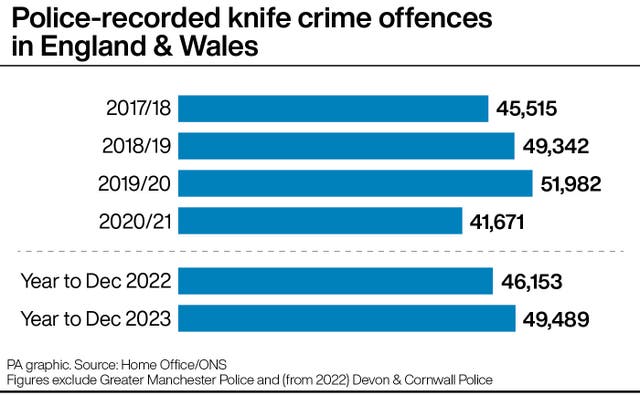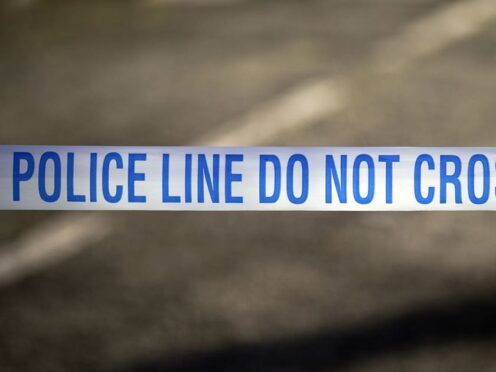Knife crime offences recorded by police forces in England and Wales rose year on year in the latest figures, but remain below pre-pandemic levels.
Some 49,489 offences were recorded in the 12 months to December 2023.
This is up 7% from 46,153 in the previous 12 months, but is 3% lower than the 51,206 in the year to March 2020.
These figures do not include Devon & Cornwall and Greater Manchester Police, due to issues involving the supply of data.
There has been a “notable increase” in the number of robberies involving a knife or sharp instrument, according to the Office for National Statistics (ONS) which compiled the figures.
These jumped from 17,352 in 2022 to 20,755 in 2023, a rise of 20%, though the total is still lower than before the Covid-19 pandemic.
Knife-enabled homicides stood at 239 last year, broadly unchanged on the 235 recorded in 2022 and also lower than pre-pandemic figures.
Some 5,398 offences classed as knife-enabled threats to kill were recorded in 2023, down slightly (by 4%) from 5,618 in the previous year, but in both cases these figures are higher than those recorded before the pandemic.
The number of offences classed as “possession of article with a blade or point” stood at 27,672 last year, up slightly (by 1%) from 27,463 in 2022.
“This follows more substantial increases in recent years, which may have been influenced by targeted police action to tackle knife crime,” the ONS said.

Police-recorded offences of possession of an article with a blade or point were 19% higher in 2023 than in the pre-pandemic year of 2019/20, and nearly double (up 92%) the figure for 2016/17.
Of the 49,489 knife crime offences last year, 29% (14,577) were recorded by the Metropolitan Police, 11% (5,324) by West Midlands Police and 5% (2,349) by West Yorkshire Police.
But when looking at the number of offences per population, West Midlands Police had the highest rate, with 180 per 100,000 people, followed by the Metropolitan Police (165 per 100,000), then Cleveland Police (143 per 100,000) and South Yorkshire Police (110 per 100,000).
